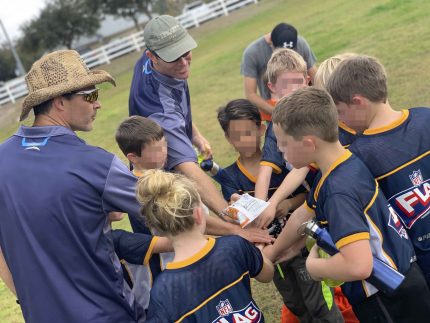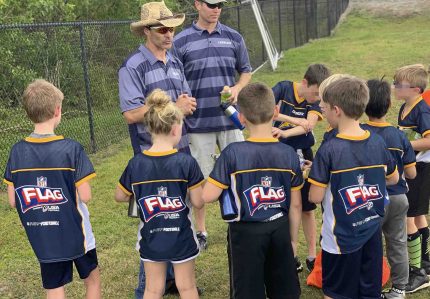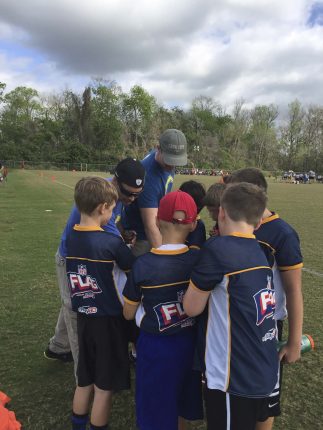
As a father, one of the best bonding times I’ve ever had with my sons has been coaching their sports teams. Unfortunately, it also has been one of the most trying times and has tested my resolve and patience more than once. On top of all that, you have the dreaded “parents” to deal with which can really make or break your love of coaching pretty quickly. (I know, I’ve been a dreaded parent myself before as well). I’ve been coaching my boys football and baseball teams going on 10 years now and I’ve had my share of ups and downs so I’ve put together a few do’s and don’t below that will hopefully help you along your journey or get you started on this rewarding role.
The Good
The good is the reason you coach, it’s what makes all the other stuff tolerable and if you get enough of it you may even continue coaching.

- First and foremost, the ability to positively influence a group of athletes I’m coaching is #1 on my list. Win or lose, if I can get a bunch of kids together and see weekly progress in the team and in the athlete personally and see visible improvements by season’s end, I will walk away feeling like I’ve done a great job and believe it’s by far the most rewarding aspect of coaching.
- The Development of Character is a very close second because sports teaches life skills like nothing else in the world can. Being a team player, helping others, lifting your teammate up when they are down, getting up time and time again after falling and how to handle both victory and defeat like a champion. Character is what makes a boy a man or a girl a woman and I get to be a part of that maturation.
- The Memories. For the rest of their lives, they will look back and remember their teammates as well as their coaches taking the time out to mentor them, push them and get the best out of them when they were young and long after you’re gone, these precious memories will live on. How’s that for a legacy!
The Bad
Unfortunately not all of your interactions with your players will be great. I’ve been blessed enough to have coached some amazing kids in my time but I have ended up at times doing more damage than good. Major Payne is a funny movie but nobody wants a real life Major Payne coaching their kids. In order to avoid this costly mistake you need to focus on a few things
- Never make the game more important than the kid’s. “IT’S JUST A GAME”. If you find yourself wanting to strangle a kid you are probably taking the game too seriously.
- Encourage your kids constantly- point out the bad but when they fix it make sure to encourage them for it repeatedly. If you want a behavior to continue, encouragement is your best weapon. Most athletes do not respond well to criticism unless it’s limited and immediately followed up by encouragement when they do it right.
- Be prepared- It’s easy to say it’s just a game and not come in ready each game but that’s an attitude you need to drop if you’re going to coach. You need to be understanding and encouraging to your players but as the coach you need to make sure you are always ready and prepared. Believe me, the kids and parents all know when they have a dud coach and you don’t want to be that guy.
The Ugly
The parents, some can really be that bad. To be fair, you get a lot of great and supportive parents, but there is rarely a time that I’ve coached where I didn’t get at least one or two critical and divisive parents.
The worst ones are the parents that scream and put their kids down during the games. If you want your kid to hate you when they grow up, congrats you are well on your way when you do that. There’s also the average athlete parents that think their child is the team MVP. I can see them after every game creeping around the group with a frown on their face before hearing those dreaded words “coach can we talk for a minute?”
The last thing you want after coaching for two hours and pouring your heart out is Karen’s lecture on how you clearly don’t see that their kid is the best kid on your team and you need to be playing them more than your “favorites”. My favorites according to Karen are always the best 2 or 3 players on the team and the only reason I’m playing them according to Karen is because I like them and not because they are any good.
I’d be lying if I didn’t admit that every season I’ve coached I’ve thought about being done with it for good because of the parents which is why you really need to make the good count. Times like this, I have to put myself in Karen’s shoes and appreciate that they are being their kids number one fan, which is something to be admired. I also look to my assistant coach/coaches for input so we can address the parents concerns and do our best for the kid. Sometimes, no matter what I do, it will not be good enough for Karen.

Block out all the noise and focus on the kids, get your encouragement from seeing them flourish and don’t worry about Karen watching your every move. If you do this you can have an amazing and rewarding coaching career whether it’s for little leagues or something bigger like high school or college. You have a chance to change a child’s life and there aren’t many things in this life of ours we can do that will that kind of impact.
Written by: Todd Marinshaw (President/CEO Allen Sportswear, Dad/Football Coach)



